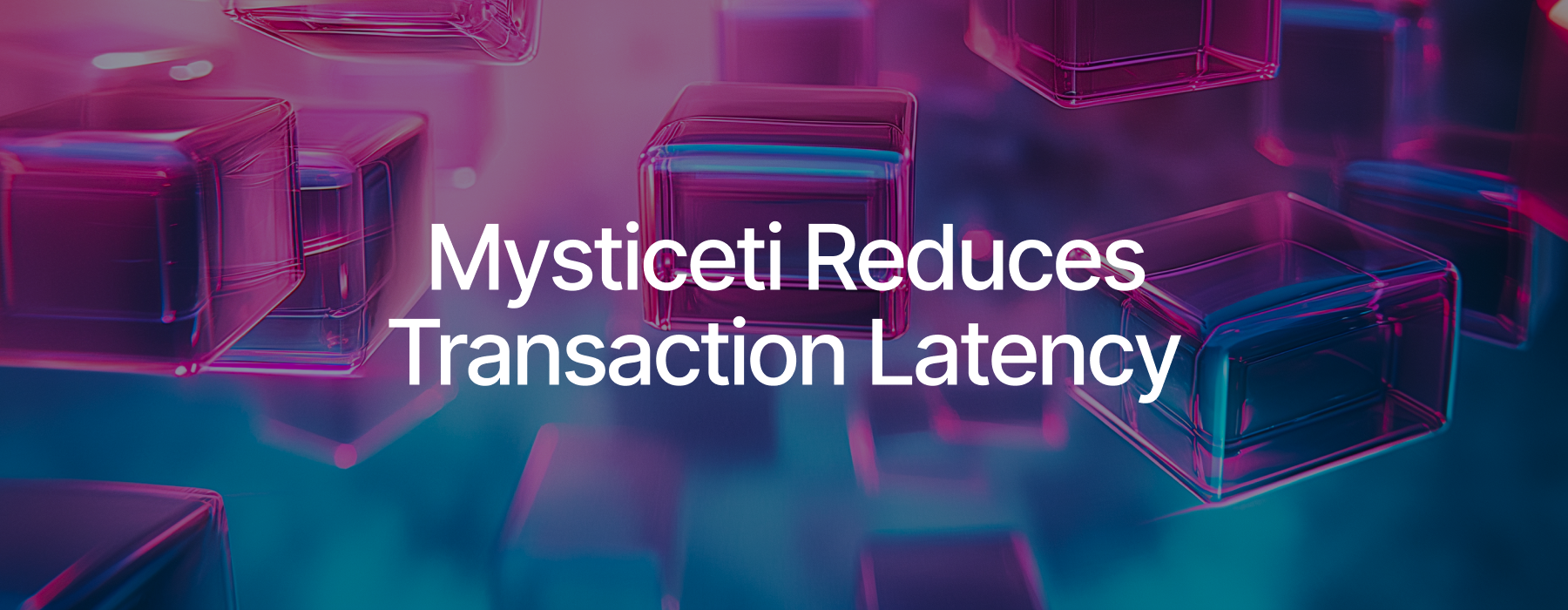Mysticeti Set to Supercharge Consensus on Sui
A new design for blockchain consensus reduces latency below Sui's already record-breaking speeds.

New research around a byzantine consensus protocol called Mysticeti gives Sui the potential to drastically reduce transaction latency and lower CPU requirements for validators. Sui is today a low-latency leader due to its fast path, but the new consensus protocol extends lower latencies for all transactions.
Sui's design combines the Narwhal-Bullshark consensus algorithm with a fast path, and makes a distinction between processing involving owned objects and shared objects. It processes the former on a fast path and the latter on a consensus path in committing to the blockchain. Under this mechanism, Sui set a record in 2023 of 5,414 TPS and 65 million transactions in a single day.
Continued research resulted in Mysticeti, which improves on Narwhal-Bullshark by addressing specific latency issues inherent in the system. Test results showed 500 milliseconds to commit for consensus and 250 milliseconds for single-owner transactions, while maintaining extremely high throughputs. Designed specifically for Sui, Mysticeti supports both single-owner object transactions, the fast path, and shared object transactions, at a fraction of the CPU costs and complexity of today’s Sui network.
Redesigning consensus
As with Narwhal and Tusk, Mysticeti uses a consensus algorithm based on a direct acyclic graph (DAG), where each validator proposes blocks of transactions linking to past blocks. Narwhal-Tusk showed that a DAG-based consensus algorithm can decouple latency from throughput, and maintain extremely high throughput even in the presence of network and node failures. A primary-workers architecture allowed Narwhal-based designs to increase throughput arbitrability without limits.
However, Narwhal-Tusk's latency of commits was slightly worse than with coupled designs, such as Jolteon and Ditto, the algorithm adopted by Meta’s Diem project, for three reasons:
First, Narwhal certifies blocks individually, as they need to be signed by a quorum of validators, each round, before being shared with all. This process results in a latency of one and a half round trips for blocks during each round. As a commit takes two rounds in Bullshark, blocks need three round trips for a commit. Mysticeti validators instead just sign and share their blocks, achieving latency of a half round trip for each block during a round. This change results in a 50 percent reduction of round trips and is, to our knowledge, the lowest number of round-trips for any existing DAG-based consensus algorithm.
Second, Narwhal and Tusk's primary-worker distinction in each validator increased throughput but may also increase latency in some circumstances. A worker needs to ensure that a sufficient number of other workers receive a block before sharing its hash with the primary to include in a header. In worst case scenarios latency increases by another round trip. This worker-primary architecture allows consensus-scaling when network bandwidth on a single machine becomes a bottleneck, which tends to occur in the range of hundreds of thousands TPS. Mysticeti breaks away from this architecture and simply inlines transactions within the primary’s block, which still allows for very high throughput in the range of over 100,000 TPS.
Finally, Bullshark and Tusk, as specified in the original paper, commit only every two or approximately three rounds, respectively, and they only commit the sub-DAG linked by the leader block. Due to this cycle, an unlucky transaction that was included just after a committed block may wait twice the number of rounds before being committed, or even more if it is not linked by the next leader. Mysticeti’s novel commit rule naturally appoints multiple leaders every round, allowing for more transactions to be committed earlier. This innovation gives Mysticeti the greatest boost in reducing latency.
As a result of these changes, Mysticeti achieves commits within three message delays, which translates to about 500 milliseconds in a testing environment on a wide area network (WAN). It still maintains a solid throughput of over 50,000 TPS under low latency, and over 100,000 TPS for a latency of around 1 second. It maintains other benefits of DAG consensus, including robustness against failures, censorship resistance, chain quality, high throughput, and full usage of network resources across validators. Full performance results are included in the paper, Mysticeti: Low-Latency DAG Consensus with Fast Commit Path. Source code for Mysticeti's evaluation can be found on GitHub.
Moreover, Sui's fast path for owned object transactions achieves finality after two round trips in an ideal scenario, around 250 milliseconds on a WAN. To maintain this very fast mode, Mysticeti also includes a fast path. A validator can include a transaction for which other validators then vote through the Mysticeti DAG without additional signatures. Mysticeti inlines transactions within blocks, enabling this process. As a result, a transaction can be certified without a mass of signature generation and verification, allowing five to 10 times faster path transactions to be processed by the same CPU.
Setting a new standard
Latency of 500 milliseconds to commit is the fastest ever reported at high throughputs for large-scale WAN consensus, and has the potential to revolutionize the blockchain industry. Couple that with scalable infrastructure reaching 50,000 TPS, and Sui becomes a compelling competitor to centralized computing systems in terms of raw performance.

